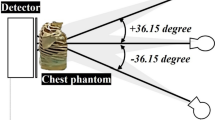Liquid crystal displays (LCD) are rapidly replacing cathode ray tube displays (CRT) for medical imaging. LCD technology has improved significantly in the last few years and has important advantages over CRT. However, there are still some aspects of LCD that raise questions as to the usefulness of liquid crystal displays for very subtle clinical diagnosis such as mammography. One drawback of modern LCD displays is the existence of spatial noise expressed as measurable stationary differences in the behavior of individual pixels. This type of noise can be described as a random stationary image superposed on top of the medical image being displayed. It is obvious that this noise image can make subtle structures invisible or add nonexistent patterns to the medical image. In the first case, subtle abnormalities in the medical image could remain undetected, whereas in the second case, it could result into a false positive. This paper describes a method to characterize the spatial noise present in high-resolution medical displays and a technique to solve the problem. A medical display with built-in compensation for the spatial noise at pixel level was developed and improved image quality is demonstrated.








Similar content being viewed by others
References
Roehrig H, Krupinski EA, Chawla AS, Fan JH, Gandhi K: Spatial noise and threshold contrasts in LCD displays. SPIE Medical Imaging (San Diego, CA), February 2003, pp. 15–20
Fan J, Dallas WJ, Roehrig H, Gandhi K, Krupinski E: Spatial noise of high-resolution liquid-crystal displays for medical imaging: quantitative analysis, estimation and compensation. In: SPIE Medical Imaging Conference Workshop, San Diego, CA, pp. 14–19, February 2004
A Badano SJ Hipper RJ Jennings (2002) ArticleTitleLuminance effect on display resolution and noise Proc SPIE Int Soc Opt Eng 4681 305–313
E Krupinski H Roehrig (2002) ArticleTitlePulmonary nodule detection and visual search: P45 and P104 monochrome versus color monitor displays Acad Radiol 9 IssueID6 638–645 Occurrence Handle10.1016/S1076-6332(03)80308-2 Occurrence Handle12061737
van Engen R, Young K, Bosmans H, Thijssen M, Visser R, Oostveen L, Geertse T, Bijkerk R, Heid P: Addendum on digital mammography to chapter three of the European Protocol for the quality control of the physical and technical aspects of mammography screening, November 2003
Roehrig H, Krupinski EA, Fan J, Chawla A, Gandhi K: Physical and psychophysical evaluation of LCD noise. 18th International Computer Assisted Radiology and Surgery Conference, Chicago, IL, pp. 23–26, June 2004
Acknowledgments
The authors would like to thank the “Flemish Institute for the Improvement of Scientific-Technological Research in the Industry (IWT)” for their financial support.
Author information
Authors and Affiliations
Corresponding author
Rights and permissions
About this article
Cite this article
Kimpe, T., Xthona, A., Matthijs, P. et al. Solution for Nonuniformities and Spatial Noise in Medical LCD Displays by Using Pixel-Based Correction. J Digit Imaging 18, 209–218 (2005). https://doi.org/10.1007/s10278-005-2939-0
Published:
Issue Date:
DOI: https://doi.org/10.1007/s10278-005-2939-0




